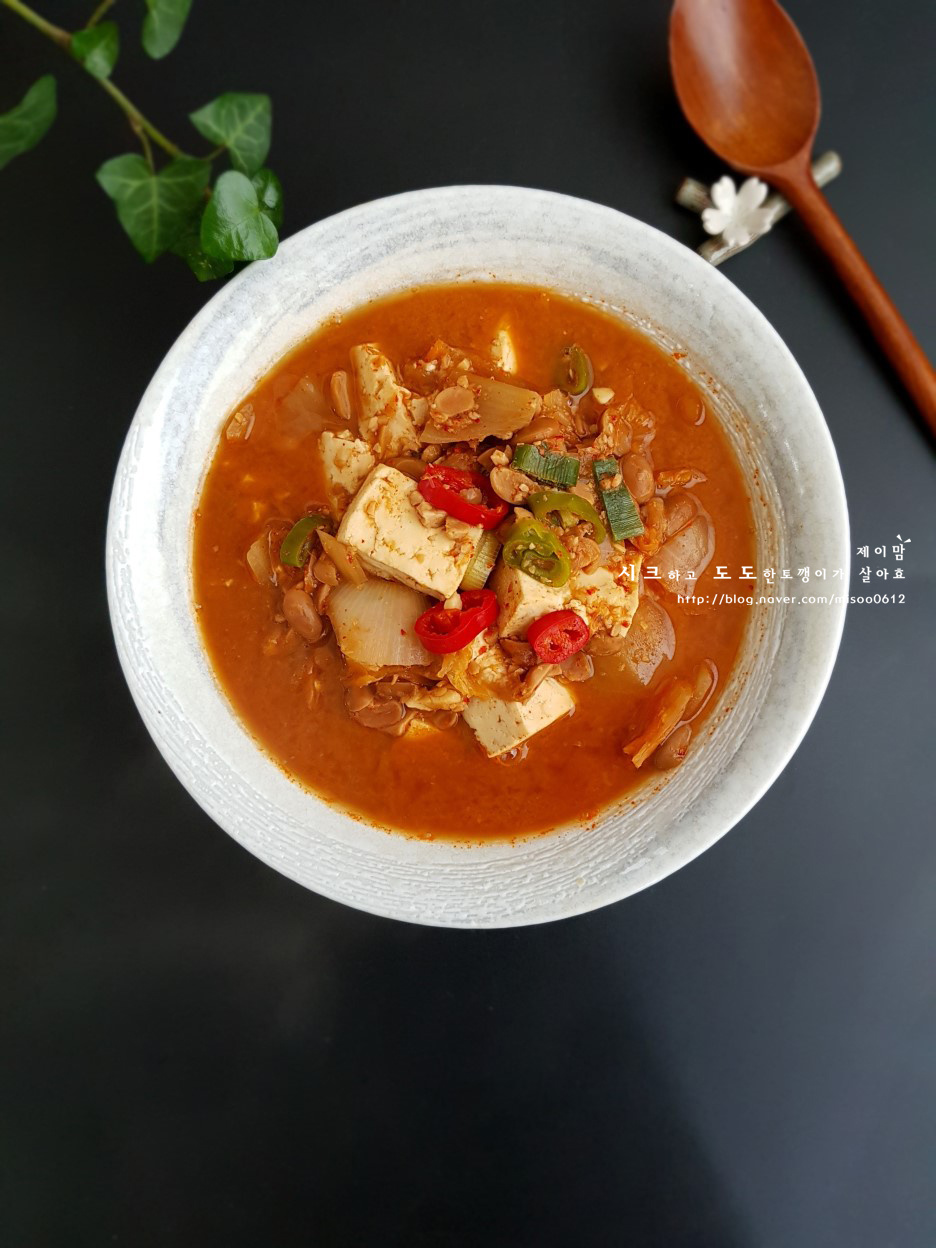Rich and Savory Kimchi Cheonggukjang Stew
How to Make Delicious Kimchi Cheonggukjang Stew

A perfect harmony of well-fermented aged kimchi and rich cheonggukjang (fermented soybean paste)! Introducing a magical recipe for Kimchi Cheonggukjang Stew that will have you finishing a bowl of rice in no time. The secret to its deep, savory broth lies in the anchovy stock and stir-fried kimchi. Enjoy a hearty meal with this simple yet soulful Aged Kimchi Cheonggukjang Stew.
Main Ingredients- Cheonggukjang (fermented soybean paste) 330g
- Aged Kimchi 1/4 head (approx. 200g)
- Tofu 1/2 block
- Onion 1/3
- Red chili pepper 1
- Green chili pepper 1
- Scallion 1/4 stalk
- Anchovies for broth 10
Broth- Rice water 4 cups + 1/2 cup (approx. 990ml)
Seasoning- Minced garlic 1 Tbsp
- Gochugaru (red pepper flakes) 0.5 Tbsp
- Rice water 4 cups + 1/2 cup (approx. 990ml)
Seasoning- Minced garlic 1 Tbsp
- Gochugaru (red pepper flakes) 0.5 Tbsp
Cooking Instructions
Step 1
First, rinse the aged kimchi lightly under running water to remove excess brine, then cut it into bite-sized pieces (about 2-3cm). Remove the stems from the red and green chili peppers and slice them thinly to add a touch of spice. Slice the scallion diagonally to enhance its aroma, and dice the onion into 1-2cm cubes. Cut the tofu into pieces similar in size to the kimchi for a visually appealing stew.

Step 2
Prepare the rice water (4.5 cups, approx. 990ml) that will be used for the broth, which is key to the stew’s deep flavor. Rice water, obtained from rinsing rice before cooking, makes the stew broth smoother and more savory.

Step 3
Now, heat a ttukbaegi (earthenware pot) or a regular pot over medium-low heat. Without adding any oil, place the 10 anchovies for broth into the dry pot and stir-fry them for about 1-2 minutes, being careful not to burn them. Stir-frying the anchovies removes any fishy smell and brings out a nutty savory flavor.

Step 4
Once the anchovies are lightly toasted, add the rinsed and chopped aged kimchi to the pot. Stir-fry them together over medium heat for about 3-4 minutes. Stir-frying the kimchi reduces its sourness and enhances its umami, deepening the stew’s flavor.

Step 5
When the kimchi is softened, pour in the prepared 4.5 cups of rice water and bring it to a boil over high heat. Once boiling, reduce the heat to medium-low, cover with a lid, and simmer for about 10 minutes until the kimchi becomes tender.

Step 6
While the stew is simmering, use a sieve to remove the stir-fried anchovies. If anchovies are boiled for too long, they can impart a bitter taste, so it’s best to remove them once the kimchi has softened sufficiently.

Step 7
Now it’s time to season the stew. Add 1 tablespoon of minced garlic and 0.5 tablespoon of gochugaru (red pepper flakes). Feel free to adjust the amount of gochugaru according to your spice preference.

Step 8
Add the 330g of cheonggukjang to the pot, stirring it in gently. Cheonggukjang’s distinctive aroma can become overpowering if boiled for too long, so it’s best to cook it over medium-low heat after adding the other ingredients.

Step 9
After adding the cheonggukjang, immediately add the prepared tofu, onion, green chili peppers, red chili peppers, and scallions. Stir everything gently to combine, then bring to a gentle boil over medium heat until all ingredients are cooked through.

Step 10
Once the stew has simmered sufficiently, taste it and adjust the seasoning with a little soy sauce for soup (guk-ganjang) if needed. Remember that cheonggukjang is already salty, so taste before adding more salt.

Step 11
Your Rich and Savory Aged Kimchi Cheonggukjang Stew is complete! Enjoy it with a bowl of freshly cooked warm rice. It’s the perfect, comforting meal for a chilly day.



